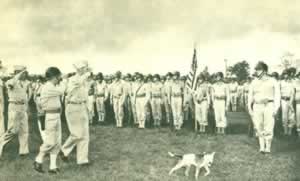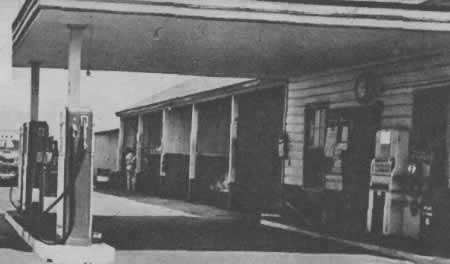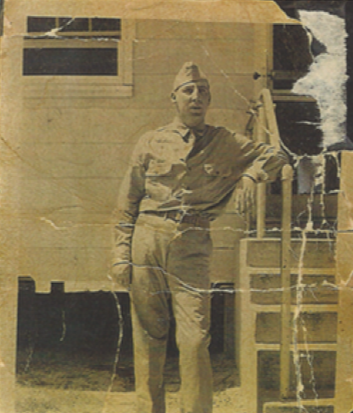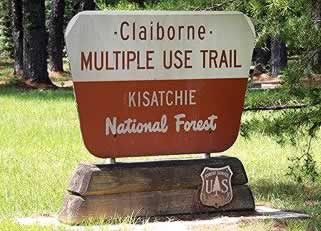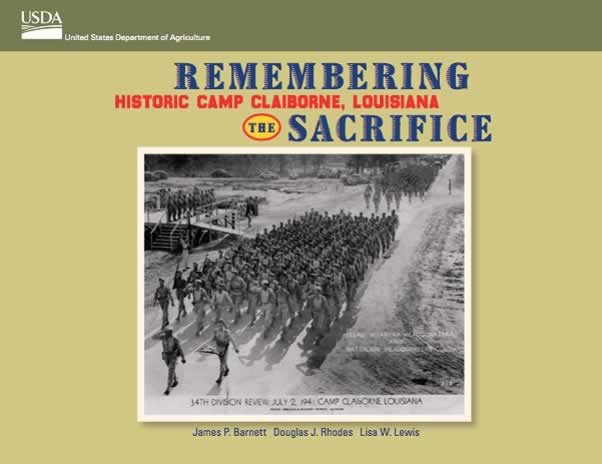Camp Claiborne Louisiana WWII Army Camp
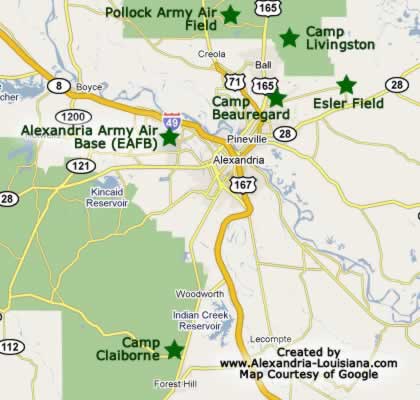
|
Alexandria and Central Louisiana were the center of a massive military build-up prior to, and during, World War II. The map below depicts the locations of major military installations during the war near Alexandria.
Camp Claiborne was situated in Rapides Parish about 18 miles south of Alexandria, off the intersection of US Highway 165 and present day La Highway 112, just north of the town of Forest Hill.
We remember driving the abandoned roads of the camp and stopping to shoot BB guns into some of the abandoned warehouses during the late 1950s.
We remain fascinated by the history of this camp, and have total respect for the men and women that served there.
Shown below is the main entrance gate to Camp Claiborne during World War II (courtesy of the Dale Genius Collection, Alexandria, LA).
The other major area Army facility, Camp Livingston, was northeast of Alexandria.
Other Alexandria area military facilities included Alexandria Army Air Base, Camp Beauregard, Esler Field, and Pollock Army Air Field, as shown in the map below. Camp Polk was located further west of Alexandria near Leesville.
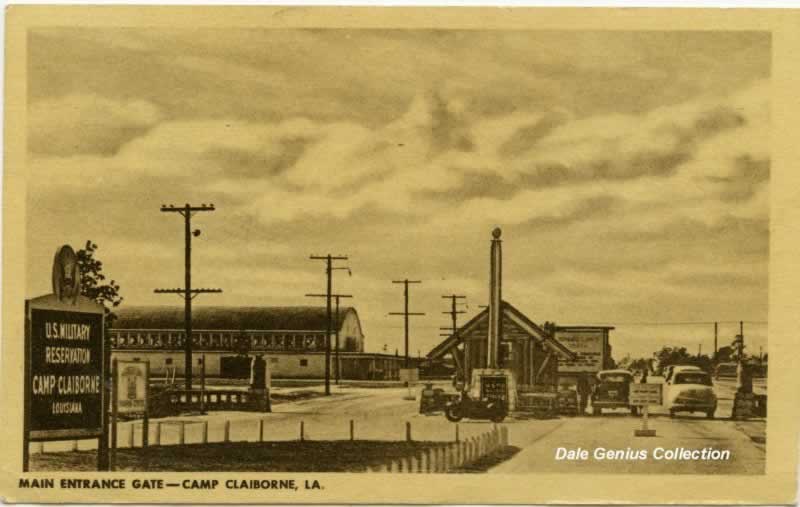
|
Camp Claiborne Construction and Activation
Camp Claiborne was originally created on June 10, 1930 as Camp Evangeline, for the "Evangeline District" of the Kisatchie National Forest.
Later, it was later renamed for William C.C. Claiborne, the Governor of the Territory of Orleans and first governor of the State of Louisiana.
In 1939 construction crews began to expand the camp for its reactivation as a U.S. Army camp during 1940. It included 30,176 acres, and was reopened for use on January 15, 1941.
Construction initially as a tent camp to provide quarters for 30,000 officers and men, the camp was enlarged in early 1942 at the "West Clairborne Annex". During 1942 tents were replaced by "hutments" which were built in two sizes: a small one to accomodate two officers, and a larger one to house 15 enlisted personnel.
Among the camp's facilities were a post office, bank, several post exchanges, seventeen chapels, six movie theaters, three guest houses, five service clubs, a large sports arena and bus station.
The first commander of the camp was Major General Ellard A. Walsh, who also commanded the 34th Infantry Division.
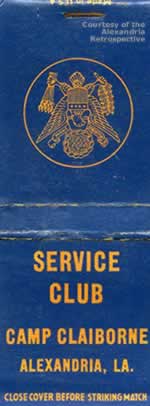 |
Many activations occurred at Camp Claiborne. The Army's first airborne units were created here. The 82nd Airborne Division was activated on August 15, 1942, and a day later half of its troops were disbursed into the new 101st Airborne.
Training for engineering units and special service forces took place at Claiborne, and railroad construction battalions trained on and maintained the Claiborne-Polk railroad line between Camp Claiborne and Camp Polk near Leesville.
The Louisiana Maneuvers
Thousands of acres of rural land in Louisiana were selected by General Leslie McNair and Colonel Mark Clark to conduct maneuvers to train the United States' rapidly expanding military forces.
The area ultimately selected to be used in the maneuvers extended over 2,400 square miles, from the Sabine River to the Calcasieu River and north to the Red River.
During the Louisiana Maneuvers, Army strategists began by teaming division against division.
Later the war games expanded to have corps fight against corps, and finally in the grand finale, Lieutenant General Walter Krueger's Third Army took the offensive against Lieutenant General Ben Lear's Second Army. Other key commanders included Col. Dwight D. Eisenhower, Chief of Staff, Third Army, and Brig. General Mark Wayne Clark, Maneuver Director, Omar Bradley, and George Patton, among other notables.
The armies of two mythical countries were assembled, totaling about 400,000 troops: Kotmk (Kansas, Oklahoma, Texas, Missouri, Kentucky) and Almat (Arkansas, Louisiana, Mississippi, Alabama, Tennessee). Navigation rights for the Mississippi River was the reason for the "war".
During the maneuvers, Army commanders were able to test and simulate a variety of offenses and conventional defenses with attacks from armored vehicles.
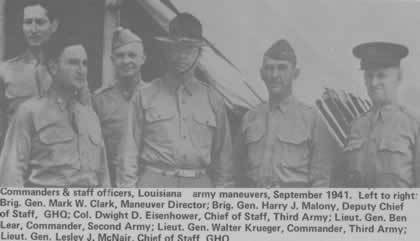 |
Patton's tanks pushed back conventionally-armed defenders but failed to achieve a major, convincing victory. Army strategists also encountered recon and troop supply issues that would later be experienced in actual real-world battle situations, creating valuable experience for the Army prior to the U.S. entering the war.
The Army conducted similar, but smaller, Louisiana maneuvers in 1942 and 1943, but cancelled exercises in 1944 so soldiers could be part of the D-Day invasion in Europe.
Scenes Around Camp Claiborne During World War II
This website has collected a number of historic images and vintage postcards on Camp Claiborne from the 1940s which show various scenes of buildings and camp life. These tell amazing stories of the magnitude of the camp, and the lives of the people who served there.
Entrance to the Camp Claiborne Hospital 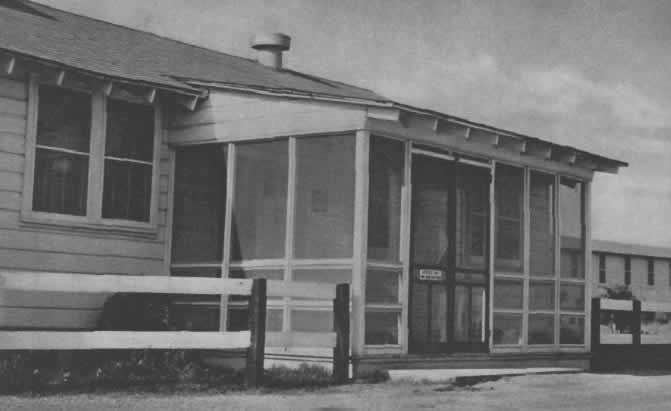 |
Camp Claiborne Nurses Quarters 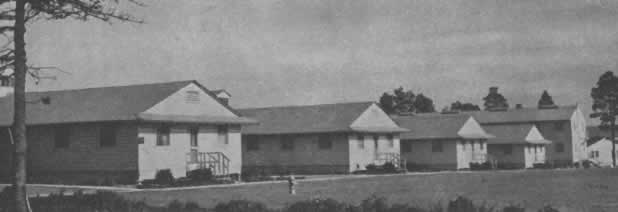 |
Camp Claiborne Soldiers Marching 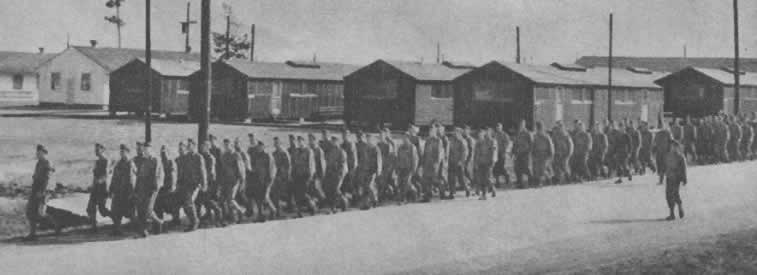 |
Camp Claiborne Post Exchange Service Station |
Camp Claiborne Officers Club 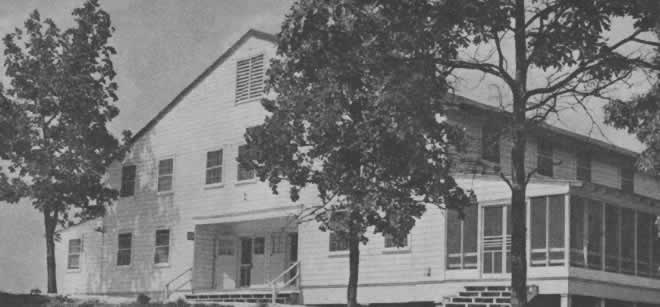 |
The Local Stories
Changes and impacts were personally felt in Alexandria as the war grew closer to the United States.
 |
Suddenly there was a shortage of many of the basics of life, and a system of rationing was inaugurated. Families were issued ration books with stamps good for certain items such as gasoline, tires, meat, and sugar.
To speed military vehicles around the area, a new four lane loop named MacArthur Drive was constructed through what had been farms and pastures on the western outskirts of Alexandria. It featured state-of-the-art traffic circles and interchanges. Gardner Highway west of the city became a straight paved highway, rumored to be an emergency airplane runway.
Convoys associated with the maneuvers frequently moved around and through Alexandria, and residents reported waking up in the middle of the night and watching General Patton's tanks rumbling down city streets.
Alexandria in 1940 extended only a few blocks west of Chester Street, and the outskirts of town were favorite places for the Army to set up their 155 millimeter cannon and anti-aircraft installations. Sometimes soldiers would permit children to peek through their range finders and climb all over the cannons. Occasionally, opposing forces would engage in a battle and children would fill their pockets with spent blank rifle cartridges.
Many local Central Louisiana citizens assisted at, and worked at, the Camp, such as James Wilbur Phillips, Sr., of Boyce, employed by the Alexandria Coca-Cola Bottling Company. He is shown in the photograph below, second from the right along with other drivers from the Alexandria Coca-Cola Bottling Company at Camp Claiborne, September 12, 1942.
Thanks to Bill Phillips of Springfield, Oregon for providing this picture of his father, and the other Coca-Cola delivery men.
 |
A Story of One Soldier: Peter T. Murray
We offer special thanks to Mary Farrell and Marge Troutman for submitting the following story and images ...
Our Dad, Peter T. Murray, was stationed at Camp Claiborne as a Pigeoneer. A picture of him is shown below. We know from his Honorable Discharge papers that he enlisted at age 39 (since he was born in November 1900) sometime in 1939/40. He was stationed at Camp Claiborne as a Non Commissioned Officer, Tech 5th gr. Co 0#6, 280 Sig Pgn Co.
He was discharged in 1943.
|
Shown below is a copy of a 1942 Christmas Dinner Menu/Greeting from the 280th Signal Pigeon Company, Camp Claiborne, Louisiana.
|

What's To Do in Alexandria for Camp Claiborne Soldiers?
 |
The main place soldiers headed on leave from Camp Claiborne, if their furlough wasn't long enough to reach home, was to the largest city in the area: Alexandria.
"SOLDIER: Alexandria, Louisiana Welcomes You!" reads this USO Information Sheet and local bus map for WWII soldiers getting around to Alexandria churches, theaters, businesses and USO clubs.
Alexandria offered restaurants, hotels, bars, lounges, taverns, movie theaters and other recreational venues for military personnel such as the USO Club shown below.
Camp Claiborne Post-War
After the war ended in 1945, the Army began work to dismantle the camp and transition it back to civilian use.
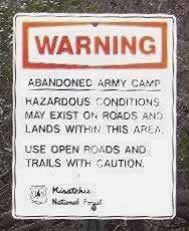 |
Some buildings were saved, and moved, and reused in the surrounding towns. In 1948, Bishop Charles P. Greco of Alexandria helped secure the land to establish a mission at the corner of Booner Miller and Denny roads in Kolin, according to the diocese. The building placed there was a remodeled barracks from Camp Claiborne.
One of the chapels from Camp Claiborne was moved to Clarence, Louisiana, in 1948 and is still used by the Baptist Church there today.
The U.S. Air Force has also used portions of Camp Claiborne as bombing and gunnery ranges during various periods of time since WWII. Aircraft from England Air Force Base near Alexandria (now closed) and Barksdale Air Force Base in Shreveport have used the facility.
Concrete streets and foundations have survived, as well as part of the main gate, and an obvious outline of the street grid of the camp is still visible from satellite photographs (see image below).
|
To this day, 75 years after the camp's construction and subsequent abandonment after the war, evidence of its existence remains, such as the giant concrete pillars and foundation shown below.
 |
Camp Claiborne Today
Today, the area is administered by the U.S. Department of Agriculture, Forest Service, Kisatchie National Forest and includes the 26-mile Claiborne Multiple-Use Trail system for hiking, walking, and biking.
For current maps, usage restrictions, facilities, alerts and warnings, visit the website of the Kisatchie National Forest Calcasieu Ranger District about recreational activities
|
|
Interactive Map of the Camp Claiborne Area via Google
Links and Other Sources of Camp Claiborne Information
Several other sites have significant information about Central Louisiana military camps, including:
Remembering The Sacrifice: Historic Camp Claiborne Louisiana
(PDF document from the U.S. Department of Agriculture)
Camp Claiborne Historical Research Center - www.CampClaiborne.com
Camp Claiborne - Birthplace of the 82nd and 101st Airborne Divisions - Facebook Community
Louisiana History Museum, Alexandria, Louisiana
Louisiana Maneuvers and Military Museum operated by the Louisiana Army National Guard
WikiPedia Article: Camp Claiborne

